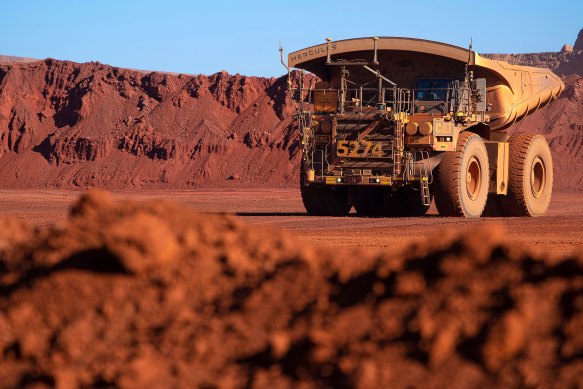Sexual harassment persists at BHP after $300m spent on women’s safety

Written by Amy Bainbridge and Nabila Ahmed In the blog post authored by Amy Bainbridge and Nabila Ahmed

September 6th, 2023 — 12:13 in the afternoon
BHP CEO Mike Henry acknowledged that the world's largest mining company still has a considerable path ahead in establishing a secure workplace for its female staff. This determination follows a recent surge of 20% in reported cases of sexual harassment within the company.
The organization, which recently finished a $300 million initiative to enhance the safety of its mining communities in Western Australia by installing additional CCTV cameras, security lighting, doors, and fences, has revealed an increase in reported instances of sexual harassment. In the 12-month period ending in June, the number of cases rose from 103 to 124. The company further reported that approximately 25% of the reported 475 incidents were confirmed to be valid instances of harassment.
According to CEO Mike Henry, BHP still has a considerable distance to travel in order to establish a secure workplace for its female staff members.
In a recent phone interview, Henry expressed his concerns about the ongoing occurrence of unacceptable conduct within the organization. He emphasized the need for a change in culture and enhanced abilities, which the company has been dedicating considerable time and resources towards. However, the reported results indicate that there is still progress to be made in achieving these objectives.
Out of the 167 confirmed cases from last year until June, which also includes cases reported previously, a total of 165 individuals who were responsible for these actions were either terminated or removed from the location if they were contractors, or they chose to resign. Henry expressed his determination to eradicate this behavior from BHP, similar to how they have successfully dealt with other safety-related incidents.
The way women are treated in the mining industry is being closely examined following a government investigation in Western Australia which uncovered disturbing incidents at distant mining sites. According to Rio Tinto, over 25% of their female employees reported cases of sexual harassment in the previous year.
'There is ongoing misconduct occurring within the organization that is not deemed acceptable.'
According to Henry, the miner's decision to make incidents of sexual harassment public is a clear indication of a shift in their culture. Since they set a goal of achieving gender parity in 2016, the percentage of female employees has increased to 35.2%. As a result, the company has seen positive changes in various aspects, including improved performance, safety, productivity, and execution of strategies compared to their competitors.
In the previous year, London's Rio Tinto, the second-largest mining company globally, reported that women made up 22.9% of the entire workforce. This information was included in their annual report released in February. Furthermore, there was an increase in female representation in Rio Tinto's senior leadership positions, reaching 28.3%.
BHP's executive leadership team now consists of an equal number of women and men. The company has set a goal for its entire workforce to also become balanced by 2025, with 40% women, 40% men, and the remaining 20% representing any gender.
BHP is part of the majority (55%) of Australia's leading 100 companies that have established a goal of achieving 40% representation of women or higher in their leadership positions, as reported by Chief Executive Women, an advocacy group for leadership diversity. Chief Executive Women is actively encouraging other companies to adopt this target, as women continue to be underrepresented in top positions within Australia's largest businesses. Achieving gender equality at the highest levels is projected to take at least fifty years based on the current progress.
According to the CEW data, the majority of CEOs in the ASX300 are men, with a staggering 91 percent. Additionally, it is noteworthy that men occupy 70 percent of executive positions. It is worth mentioning that out of all these companies, only 26 have female CEOs, which shows a slight increase from 18 in the previous year, 2022. Despite some progress being made since 2022, when it was a mere 6 percent, only 23 percent of ASX300 companies have executive leadership teams with a balanced gender representation.
In an interview, Susan Lloyd-Hurwitz, President of CEW, expressed the belief that teams with varying backgrounds and perspectives make superior decisions in every aspect. She highlighted their improved performance for shareholders, the environment, customers, and employees.

